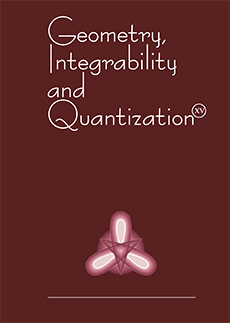Abstract
The surfaces in three dimensional Euclidean space ${\mathbb R}^3$ obtained through the use of the soliton techniques are called integrable surfaces. Integrable equations and their Lax equations possess certain symmetries. Infinitesimal versions of these symmetries are deformations which are responsible in constructing the integrable surfaces. There are four different types of deformations. The spectral parameter, the gauge, the generalized symmetries and integration parameters deformations. We shall present here how these deformations generate surfaces in ${\mathbb R}^3$ and also in three-dimensional Minkowski ${\mathbb M}_{3}$ space. The key point here is to start with an integrable equation and its Lax representation. In this work we assume that the Lax equations of integrable equations are given in terms of a group $G$ and its algebra ${\mathfrak g}$ valued functions. The surfaces in ${\mathbb R}^3$ are also represented via respect ${\mathfrak g}$ valued functions. In constructing integrable surfaces we need the solutions of both the integrable equations and their corresponding Lax equations. In this work we use the one soliton solutions of the integrable equations. We solve the Lax equations for one soliton solutions of the integrable equations. Then choosing a deformation one can construct several types of surfaces. After obtaining these surfaces the next is to search for their properties. Most of these surfaces are Weingarten surfaces, Willmore-like surfaces and surfaces which are derivable from a variational principle. We give sketches of the interesting surfaces of Korteweg-de Vries (KdV), modified Korteweg-de Vries (mKdV) and Nonlinear Schrödinger (NLS), sine Gordon (SG) equations.
Information
Digital Object Identifier: 10.7546/giq-17-2016-13-71


